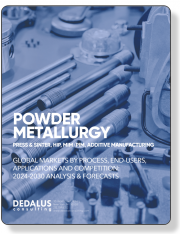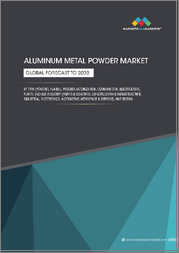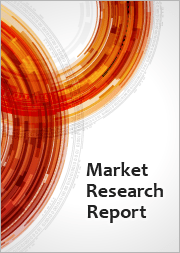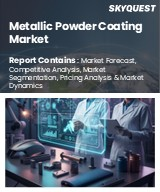
|
시장보고서
상품코드
1797035
나노 금속 산화물 시장 : 세계 산업 규모, 점유율, 동향, 기회, 예측 : 제품별, 용도별, 지역별, 경쟁별(2020-2030년)Nano Metal Oxide Market - Global Industry Size, Share, Trends, Opportunity & Forecast, Segmented By Product, By Application, By Region & Competition, 2020-2030F |
||||||
세계의 나노 금속 산화물 시장 규모는 2024년에 9억 6,564만 달러로, CAGR 5.15%로 2030년에는 13억 525만 달러에 달할 것으로 예측됩니다.
세계 나노 금속 산화물 시장은 나노 스케일 재료의 첨단 산업 공정에 대한 통합이 심화됨에 따라 가속화된 성장세를 보이고 있습니다. 산화아연(ZnO), 이산화티타늄(TiO2), 이산화규소(SiO2), 산화알루미늄(Al2O3), 산화세륨(CeO2) 등의 나노 금속산화물은 우수한 자외선 차단, 촉매 활성, 전기 절연, 항균 성능, 기계적 보강을 가능하게 하는 나노 스케일 특성을 가지고 있으며, 전자 전자기기, 헬스케어, 재생에너지, 화장품, 고성능 코팅 등 주요 분야에서 채택이 진행되고 있습니다.
| 시장 개요 | |
|---|---|
| 예측 기간 | 2026-2030년 |
| 시장 규모 : 2024년 | 9억 6,564만 달러 |
| 시장 규모 : 2030년 | 13억 525만 달러 |
| CAGR : 2025-2030년 | 5.15% |
| 급성장 부문 | 이산화 규소 |
| 최대 시장 | 북미 |
이 시장은 물량 확대뿐만 아니라 고도화도 진행되고 있습니다. 의약품, 전자기기 등 규제 대상 분야에서 엄격한 성능 기준을 충족하는 용도 특화형 및 표면 기능화형에 대한 수요가 증가하고 있습니다. 또한 최종사용자는 일관성, 입자 크기 제어 및 분산 품질을 우선시하고 있으며, 공급업체는 정밀 제조 기술 및 고급 배합 능력에 대한 투자를 장려하고 있습니다.
이 시장은 특히 고체 배터리, 표적 약물전달 시스템, 스마트 코팅, 투명 전자기기 등 분야 전반의 기술 혁신에 힘입어 장기적인 가치 창출이 가능한 위치에 있습니다. 상용화 시기를 앞당기고 새로운 수요에 맞게 나노소재를 조정하기 위해서는 재료과학자, 나노테크놀러지 기업, 최종사용자 업계의 전략적 협력이 필수적입니다.
주요 시장 성장 촉진요인
전자기기 및 광학기기 분야에서의 나노 금속산화물 수요 증가
주요 시장 이슈
안전 및 독성 우려와 환경에 미치는 영향
주요 시장 동향
나노테크놀러지의 급속한 발전
목차
제1장 개요
제2장 조사 방법
제3장 개요
제4장 고객의 소리
제5장 세계의 나노 금속 산화물 시장 전망
- 시장 규모·예측
- 금액별
- 시장 점유율·예측
- 제품별(산화알루미늄, 산화철, 이산화티타늄, 이산화 규소, 산화 아연)
- 용도별(전자기기·광학 기기, 의료·퍼스널케어, 페인트·코팅, 기타)
- 지역별
- 기업별(2024년)
- 시장 맵
제6장 북미의 나노 금속 산화물 시장 전망
- 시장 규모·예측
- 시장 점유율·예측
- 북미 : 국가별 분석
- 미국
- 캐나다
- 멕시코
제7장 유럽의 나노 금속 산화물 시장 전망
- 시장 규모·예측
- 시장 점유율·예측
- 유럽 : 국가별 분석
- 독일
- 영국
- 이탈리아
- 프랑스
- 스페인
제8장 아시아태평양의 나노 금속 산화물 시장 전망
- 시장 규모·예측
- 시장 점유율·예측
- 아시아태평양 : 국가별 분석
- 중국
- 인도
- 일본
- 한국
- 호주
제9장 남미의 나노 금속 산화물 시장 전망
- 시장 규모·예측
- 시장 점유율·예측
- 남미 : 국가별 분석
- 브라질
- 아르헨티나
- 콜롬비아
제10장 중동 및 아프리카의 나노 금속 산화물 시장 전망
- 시장 규모·예측
- 시장 점유율·예측
- 중동 및 아프리카 : 국가별 분석
- 남아프리카공화국
- 사우디아라비아
- 아랍에미리트
제11장 시장 역학
- 촉진요인
- 과제
제12장 시장 동향과 발전
- 최근 동향
- 제품 출시
- 합병과 인수
제13장 세계의 나노 금속 산화물 시장 : SWOT 분석
제14장 경쟁 구도
- Nanophase Technologies Corporation
- American Elements
- SkySpring Nanomaterials, Inc.
- Nanoshel LLC
- Abc Nanotech Co., Ltd.
- Nanostructured & Amorphous Materials, Inc.
- Hongwu International Group Ltd
- Nissan Chemical Corporation
- NYACOL Nano Technologies, Inc
- EPRUI Biotech Co. Ltd.
제15장 전략적 제안
제16장 조사회사 소개·면책사항
KSA 25.09.02Global Nano Metal Oxide market was valued at USD 965.64 Million in 2024 and is expected to reach USD 1305.25 Million by 2030 with a CAGR of 5.15%. The Global Nano Metal Oxide Market is experiencing accelerated growth, fueled by the deepening integration of nanoscale materials into advanced industrial processes. Key sectors such as electronics, healthcare, renewable energy, cosmetics, and high-performance coatings are increasingly adopting nano metal oxides including zinc oxide (ZnO), titanium dioxide (TiO2), silicon dioxide (SiO2), aluminum oxide (Al2O3), and cerium oxide (CeO2) due to their engineered nanoscale properties that enable superior UV shielding, catalytic activity, electrical insulation, antimicrobial performance, and mechanical reinforcement.
| Market Overview | |
|---|---|
| Forecast Period | 2026-2030 |
| Market Size 2024 | USD 965.64 Million |
| Market Size 2030 | USD 1305.25 Million |
| CAGR 2025-2030 | 5.15% |
| Fastest Growing Segment | Silicon Dioxide |
| Largest Market | North America |
This market is not just growing in volume, but also evolving in sophistication. Demand is shifting toward application-specific and surface-functionalized variants that meet stringent performance criteria across regulated sectors like pharmaceuticals and electronics. Moreover, end users are prioritizing consistency, particle size control, and dispersion quality, driving suppliers to invest in precision manufacturing technologies and advanced formulation capabilities.
The market is positioned for long-term value creation, propelled by cross-sectoral innovation, particularly in solid-state batteries, targeted drug delivery systems, smart coatings, and transparent electronics. Strategic collaborations between material scientists, nanotechnology firms, and end-user industries are becoming essential to accelerate commercialization timelines and tailor nanomaterials for emerging needs.
Key Market Drivers
Rising Demand of Nano Metal Oxide in Electronics & Optic Sector
The rising demand for nano metal oxides in the electronics and optics sector is a significant driver propelling the growth of the Global Nano Metal Oxide Market. As electronic devices become increasingly compact, powerful, and multifunctional, the need for materials with exceptional thermal, electrical, and optical properties has become critical making nano metal oxides an essential component in next-generation electronic and photonic systems. Modern electronics demand materials that can function effectively at micro and nano scales without compromising performance. Nano metal oxides such as zinc oxide (ZnO), titanium dioxide (TiO2), and indium tin oxide (ITO) offer enhanced electrical conductivity, dielectric strength, and thermal stability, making them highly suitable for semiconductors, sensors, thin-film transistors, and integrated circuits. As device sizes shrink, these nanoparticles provide the high surface area and tunable properties needed for advanced component manufacturing. Nano metal oxides are playing a vital role in LCDs, OLEDs, touchscreens, and photodetectors due to their superior optical transparency and conductivity. For instance, indium tin oxide nanoparticles are widely used in transparent conductive coatings, essential for high-resolution displays and solar panels. Similarly, TiO2 and ZnO nanoparticles are integral to light management layers, anti-reflective coatings, and photocatalytic films in both consumer electronics and industrial optical devices.
The market is witnessing a shift toward flexible, wearable, and printable electronics, where nano metal oxides are proving indispensable. Their ability to be incorporated into inks and coatings enables the development of bendable circuits, smart packaging, and low-cost printed sensors. Solution-processable nano oxides like ZnO and Al2O3 are crucial for low-temperature, printable electronic devices, opening new avenues in IoT, healthcare monitoring, and smart textiles. In a global push toward energy-efficient electronics, nano metal oxides are being utilized to improve power management, heat dissipation, and battery performance. Aluminum oxide (Al2O3) and cerium oxide (CeO2) are often used in insulating layers and dielectric materials to enhance energy storage and minimize leakage current in capacitors and transistors. Their stability at elevated temperatures makes them highly suitable for harsh-environment electronic applications.
Key Market Challenges
Safety and Toxicity Concerns and Environmental Impact
One of the foremost challenges in the nano metal oxide market is ensuring the safety of these materials. The unique properties exhibited at the nanoscale can result in altered reactivity and potential toxicity. Understanding the behavior of nano metal oxides in biological and environmental contexts is crucial. Robust toxicological studies and risk assessments are necessary to ensure the safe utilization of these materials in various applications. Regulatory bodies worldwide are increasingly demanding comprehensive safety evaluations before allowing nano metal oxides to enter the market.
Moreover, as the demand for nano metal oxides increases, so does the concern about their environmental impact. The potential release of nano metal oxides into the environment during production, use, and disposal stages raises questions about their persistence and potential to accumulate in ecosystems. Researchers and industries are actively exploring strategies to mitigate these impacts, including developing eco-friendly synthesis methods and improving recycling and waste management techniques.
Key Market Trends
Nanotechnology's Rapid Advancements
The convergence of nanotechnology with various scientific disciplines has propelled the development of novel nano metal oxides. Researchers are leveraging advanced techniques to engineer metal oxides at the nanoscale, allowing for precise control over their size, shape, and properties. This has led to the creation of tailored materials with enhanced functionalities, spurring the adoption of nano metal oxides in diverse applications. The electronics industry has been a major beneficiary of nano metal oxides. These materials offer improved conductivity, high dielectric constants, and enhanced thermal stability, making them invaluable for semiconductor manufacturing, sensors, and displays. As electronic devices continue to shrink in size and demand higher performance, nano metal oxides have become indispensable components enabling technological advancement.
The energy sector is undergoing a transformative shift towards sustainable and efficient solutions. Nano metal oxides have emerged as vital players in this transition. They are being used in energy storage systems, such as lithium-ion batteries and supercapacitors, to enhance energy density and charge-discharge rates. Additionally, nano metal oxides find application in solar cells and catalysis, contributing to the development of cleaner and more efficient energy sources. These factors are anticipated to drive the growth of the global Nano Metal Oxide market during the forecast period.
Key Market Players
- Nanophase Technologies Corporation
- American Elements
- SkySpring Nanomaterials, Inc.
- Nanoshel LLC
- Abc Nanotech Co., Ltd.
- Nanostructured & Amorphous Materials, Inc.
- Hongwu International Group Ltd
- Nissan Chemical Corporation
- NYACOL Nano Technologies, Inc
- EPRUI Biotech Co. Ltd.
Report Scope:
In this report, the Global Nano Metal Oxide Market has been segmented into the following categories, in addition to the industry trends which have also been detailed below:
Nano Metal Oxide Market, By Product:
- Aluminum Oxide
- Iron Oxide
- Titanium Dioxide
- Silicon Dioxide
- Zinc Oxide
Nano Metal Oxide Market, By Application:
- Electronics & Optics
- Medical & Personal care
- Paints & Coatings
- Others
Nano Metal Oxide Market, By Region:
- North America
- United States
- Canada
- Mexico
- Europe
- France
- Germany
- United Kingdom
- Italy
- Spain
- Asia-Pacific
- China
- India
- South Korea
- Japan
- Australia
- South America
- Brazil
- Argentina
- Colombia
- Middle East & Africa
- South Africa
- Saudi Arabia
- UAE
Competitive Landscape
Company Profiles: Detailed analysis of the major companies present in the Global Nano Metal Oxide Market.
Available Customizations:
Global Nano Metal Oxide Market report with the given market data, TechSci Research offers customizations according to a company's specific needs. The following customization options are available for the report:
Company Information
- Detailed analysis and profiling of additional market players (up to five).
Table of Contents
1. Product Overview
- 1.1. Market Definition
- 1.2. Scope of the Market
- 1.2.1. Markets Covered
- 1.2.2. Years Considered for Study
- 1.2.3. Key Market Segmentations
2. Research Methodology
- 2.1. Objective of the Study
- 2.2. Baseline Methodology
- 2.3. Key Industry Partners
- 2.4. Major Association and Secondary Sources
- 2.5. Forecasting Methodology
- 2.6. Data Triangulation & Validation
- 2.7. Assumptions and Limitations
3. Executive Summary
- 3.1. Overview of the Market
- 3.2. Overview of Key Market Segmentations
- 3.3. Overview of Key Market Players
- 3.4. Overview of Key Regions/Countries
- 3.5. Overview of Market Drivers, Challenges, Trends
4. Voice of Customer
5. Nano Metal Oxide Market Outlook
- 5.1. Market Size & Forecast
- 5.1.1. By Value
- 5.2. Market Share & Forecast
- 5.2.1. By Product (Aluminum Oxide, Iron Oxide, Titanium Dioxide, Silicon Dioxide, Zinc Oxide)
- 5.2.2. By Application (Electronics & optics, Medical & personal care, Paints & coatings, Others)
- 5.2.3. By Region
- 5.2.4. By Company (2024)
- 5.3. Market Map
6. North America Nano Metal Oxide Market Outlook
- 6.1. Market Size & Forecast
- 6.1.1. By Value
- 6.2. Market Share & Forecast
- 6.2.1. By Product
- 6.2.2. By Application
- 6.2.3. By Country
- 6.3. North America: Country Analysis
- 6.3.1. United States Nano Metal Oxide Market Outlook
- 6.3.1.1. Market Size & Forecast
- 6.3.1.1.1. By Value
- 6.3.1.2. Market Share & Forecast
- 6.3.1.2.1. By Product
- 6.3.1.2.2. By Application
- 6.3.1.1. Market Size & Forecast
- 6.3.2. Canada Nano Metal Oxide Market Outlook
- 6.3.2.1. Market Size & Forecast
- 6.3.2.1.1. By Value
- 6.3.2.2. Market Share & Forecast
- 6.3.2.2.1. By Product
- 6.3.2.2.2. By Application
- 6.3.2.1. Market Size & Forecast
- 6.3.3. Mexico Nano Metal Oxide Market Outlook
- 6.3.3.1. Market Size & Forecast
- 6.3.3.1.1. By Value
- 6.3.3.2. Market Share & Forecast
- 6.3.3.2.1. By Product
- 6.3.3.2.2. By Application
- 6.3.3.1. Market Size & Forecast
- 6.3.1. United States Nano Metal Oxide Market Outlook
7. Europe Nano Metal Oxide Market Outlook
- 7.1. Market Size & Forecast
- 7.1.1. By Value
- 7.2. Market Share & Forecast
- 7.2.1. By Product
- 7.2.2. By Application
- 7.2.3. By Country
- 7.3. Europe: Country Analysis
- 7.3.1. Germany Nano Metal Oxide Market Outlook
- 7.3.1.1. Market Size & Forecast
- 7.3.1.1.1. By Value
- 7.3.1.2. Market Share & Forecast
- 7.3.1.2.1. By Product
- 7.3.1.2.2. By Application
- 7.3.1.1. Market Size & Forecast
- 7.3.2. United Kingdom Nano Metal Oxide Market Outlook
- 7.3.2.1. Market Size & Forecast
- 7.3.2.1.1. By Value
- 7.3.2.2. Market Share & Forecast
- 7.3.2.2.1. By Product
- 7.3.2.2.2. By Application
- 7.3.2.1. Market Size & Forecast
- 7.3.3. Italy Nano Metal Oxide Market Outlook
- 7.3.3.1. Market Size & Forecast
- 7.3.3.1.1. By Value
- 7.3.3.2. Market Share & Forecast
- 7.3.3.2.1. By Product
- 7.3.3.2.2. By Application
- 7.3.3.1. Market Size & Forecast
- 7.3.4. France Nano Metal Oxide Market Outlook
- 7.3.4.1. Market Size & Forecast
- 7.3.4.1.1. By Value
- 7.3.4.2. Market Share & Forecast
- 7.3.4.2.1. By Product
- 7.3.4.2.2. By Application
- 7.3.4.1. Market Size & Forecast
- 7.3.5. Spain Nano Metal Oxide Market Outlook
- 7.3.5.1. Market Size & Forecast
- 7.3.5.1.1. By Value
- 7.3.5.2. Market Share & Forecast
- 7.3.5.2.1. By Product
- 7.3.5.2.2. By Application
- 7.3.5.1. Market Size & Forecast
- 7.3.1. Germany Nano Metal Oxide Market Outlook
8. Asia-Pacific Nano Metal Oxide Market Outlook
- 8.1. Market Size & Forecast
- 8.1.1. By Value
- 8.2. Market Share & Forecast
- 8.2.1. By Product
- 8.2.2. By Application
- 8.2.3. By Country
- 8.3. Asia-Pacific: Country Analysis
- 8.3.1. China Nano Metal Oxide Market Outlook
- 8.3.1.1. Market Size & Forecast
- 8.3.1.1.1. By Value
- 8.3.1.2. Market Share & Forecast
- 8.3.1.2.1. By Product
- 8.3.1.2.2. By Application
- 8.3.1.1. Market Size & Forecast
- 8.3.2. India Nano Metal Oxide Market Outlook
- 8.3.2.1. Market Size & Forecast
- 8.3.2.1.1. By Value
- 8.3.2.2. Market Share & Forecast
- 8.3.2.2.1. By Product
- 8.3.2.2.2. By Application
- 8.3.2.1. Market Size & Forecast
- 8.3.3. Japan Nano Metal Oxide Market Outlook
- 8.3.3.1. Market Size & Forecast
- 8.3.3.1.1. By Value
- 8.3.3.2. Market Share & Forecast
- 8.3.3.2.1. By Product
- 8.3.3.2.2. By Application
- 8.3.3.1. Market Size & Forecast
- 8.3.4. South Korea Nano Metal Oxide Market Outlook
- 8.3.4.1. Market Size & Forecast
- 8.3.4.1.1. By Value
- 8.3.4.2. Market Share & Forecast
- 8.3.4.2.1. By Product
- 8.3.4.2.2. By Application
- 8.3.4.1. Market Size & Forecast
- 8.3.5. Australia Nano Metal Oxide Market Outlook
- 8.3.5.1. Market Size & Forecast
- 8.3.5.1.1. By Value
- 8.3.5.2. Market Share & Forecast
- 8.3.5.2.1. By Product
- 8.3.5.2.2. By Application
- 8.3.5.1. Market Size & Forecast
- 8.3.1. China Nano Metal Oxide Market Outlook
9. South America Nano Metal Oxide Market Outlook
- 9.1. Market Size & Forecast
- 9.1.1. By Value
- 9.2. Market Share & Forecast
- 9.2.1. By Product
- 9.2.2. By Application
- 9.2.3. By Country
- 9.3. South America: Country Analysis
- 9.3.1. Brazil Nano Metal Oxide Market Outlook
- 9.3.1.1. Market Size & Forecast
- 9.3.1.1.1. By Value
- 9.3.1.2. Market Share & Forecast
- 9.3.1.2.1. By Product
- 9.3.1.2.2. By Application
- 9.3.1.1. Market Size & Forecast
- 9.3.2. Argentina Nano Metal Oxide Market Outlook
- 9.3.2.1. Market Size & Forecast
- 9.3.2.1.1. By Value
- 9.3.2.2. Market Share & Forecast
- 9.3.2.2.1. By Product
- 9.3.2.2.2. By Application
- 9.3.2.1. Market Size & Forecast
- 9.3.3. Colombia Nano Metal Oxide Market Outlook
- 9.3.3.1. Market Size & Forecast
- 9.3.3.1.1. By Value
- 9.3.3.2. Market Share & Forecast
- 9.3.3.2.1. By Product
- 9.3.3.2.2. By Application
- 9.3.3.1. Market Size & Forecast
- 9.3.1. Brazil Nano Metal Oxide Market Outlook
10. Middle East and Africa Nano Metal Oxide Market Outlook
- 10.1. Market Size & Forecast
- 10.1.1. By Value
- 10.2. Market Share & Forecast
- 10.2.1. By Product
- 10.2.2. By Application
- 10.2.3. By Country
- 10.3. MEA: Country Analysis
- 10.3.1. South Africa Nano Metal Oxide Market Outlook
- 10.3.1.1. Market Size & Forecast
- 10.3.1.1.1. By Value
- 10.3.1.2. Market Share & Forecast
- 10.3.1.2.1. By Product
- 10.3.1.2.2. By Application
- 10.3.1.1. Market Size & Forecast
- 10.3.2. Saudi Arabia Nano Metal Oxide Market Outlook
- 10.3.2.1. Market Size & Forecast
- 10.3.2.1.1. By Value
- 10.3.2.2. Market Share & Forecast
- 10.3.2.2.1. By Product
- 10.3.2.2.2. By Application
- 10.3.2.1. Market Size & Forecast
- 10.3.3. UAE Nano Metal Oxide Market Outlook
- 10.3.3.1. Market Size & Forecast
- 10.3.3.1.1. By Value
- 10.3.3.2. Market Share & Forecast
- 10.3.3.2.1. By Product
- 10.3.3.2.2. By Application
- 10.3.3.1. Market Size & Forecast
- 10.3.1. South Africa Nano Metal Oxide Market Outlook
11. Market Dynamics
- 11.1. Drivers
- 11.2. Challenges
12. Market Trends & Developments
- 12.1. Recent Developments
- 12.2. Product Launches
- 12.3. Mergers & Acquisitions
13. Global Nano Metal Oxide Market: SWOT Analysis
14. Competitive Landscape
- 14.1. Nanophase Technologies Corporation
- 14.1.1. Business Overview
- 14.1.2. Product & Service Offerings
- 14.1.3. Recent Developments
- 14.1.4. Financials (If Listed)
- 14.1.5. Key Personnel
- 14.1.6. SWOT Analysis
- 14.2. American Elements
- 14.3. SkySpring Nanomaterials, Inc.
- 14.4. Nanoshel LLC
- 14.5. Abc Nanotech Co., Ltd.
- 14.6. Nanostructured & Amorphous Materials, Inc.
- 14.7. Hongwu International Group Ltd
- 14.8. Nissan Chemical Corporation
- 14.9. NYACOL Nano Technologies, Inc
- 14.10. EPRUI Biotech Co. Ltd.
15. Strategic Recommendations
16. About Us & Disclaimer
(주말 및 공휴일 제외)










